Written by: Marty Sims (MS Student)
At the end of my first year as a master’s student, I was immediately met with a wonderful opportunity to join my first-ever research cruise and sail aboard NOAA’s Nancy Foster. Alongside fellow classmates and colleagues at USF, as well as students from the College of Charleston and the University of New Hampshire, we would be working with several esteemed NOAA technicians and crew members to collect bathymetry data from Blake Plateau.
This experience was particularly spectacular to me because, although I am a marine scientist, my focus thus far has been on the biological aspects of oceanography, rather than hydrography. Everything about the software and protocols used to collect and process bathymetry is still completely new to me. Quite honestly, it felt like I was learning an entirely new language – which was actually quite enthralling! I have been intrigued by the methods and applications of multibeam bathymetry ever since hearing about it during my first week at USF and instantly became eager to investigate whether I can apply similar methods to my research, and how it could be used to improve my data.
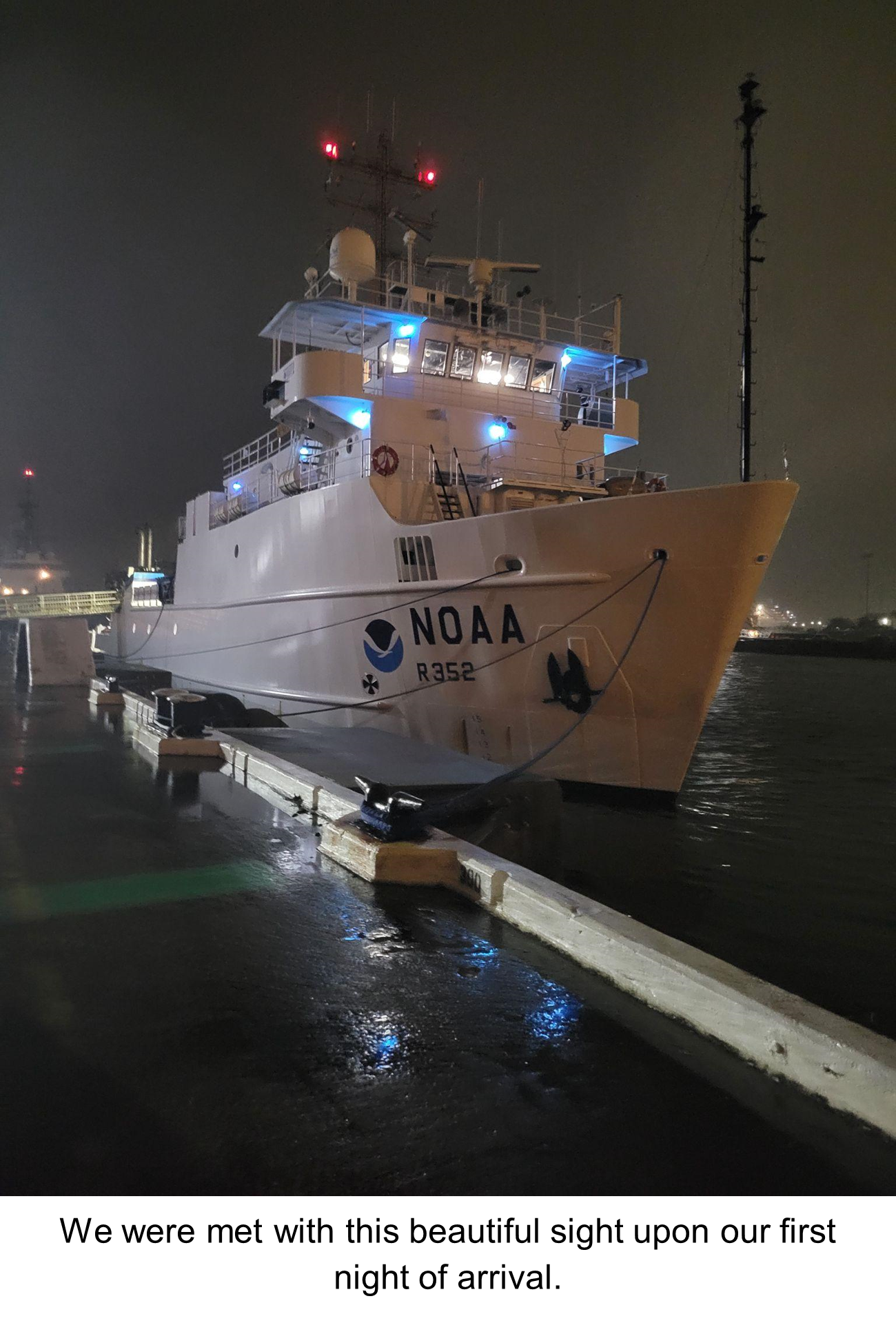
During this expedition, we each took an 8-hour watch between 4 am to midnight to keep an eye on the incoming multibeam data and hone our skills in processing those data. The shifts were already remarkably generous compared to standard ship operating hours, and I am even luckier to say that the odds were ever in my favor, as I got an extremely “normal” shift (8a – 4p – the best!). During these hours, we were stationed in the command center, where much work – and puzzle-making/ trivia-pursuing – went along. As a newcomer both to the ship and the entire world of bathymetry, I was able to spend my time observing and learning in detail from many skilled and passionate minds. I learned the basics of running software such as Caris and Qimera for cleaning data (via a method referred to as “dot killing” – a.k.a. erasing inaccurate data points) and HYPACK for collecting data. At certain intervals throughout our lines, I was also able to observe the casting and retrieval of a device that collected conductivity, temperature, and depth (CTD) data of the water column to procure sound velocity profiles. The device is cast from the stern while the ship maintains speed, and after it collects the data, it is quickly reeled back in. The data are then delivered and incorporated to the rest of the systems via Bluetooth.
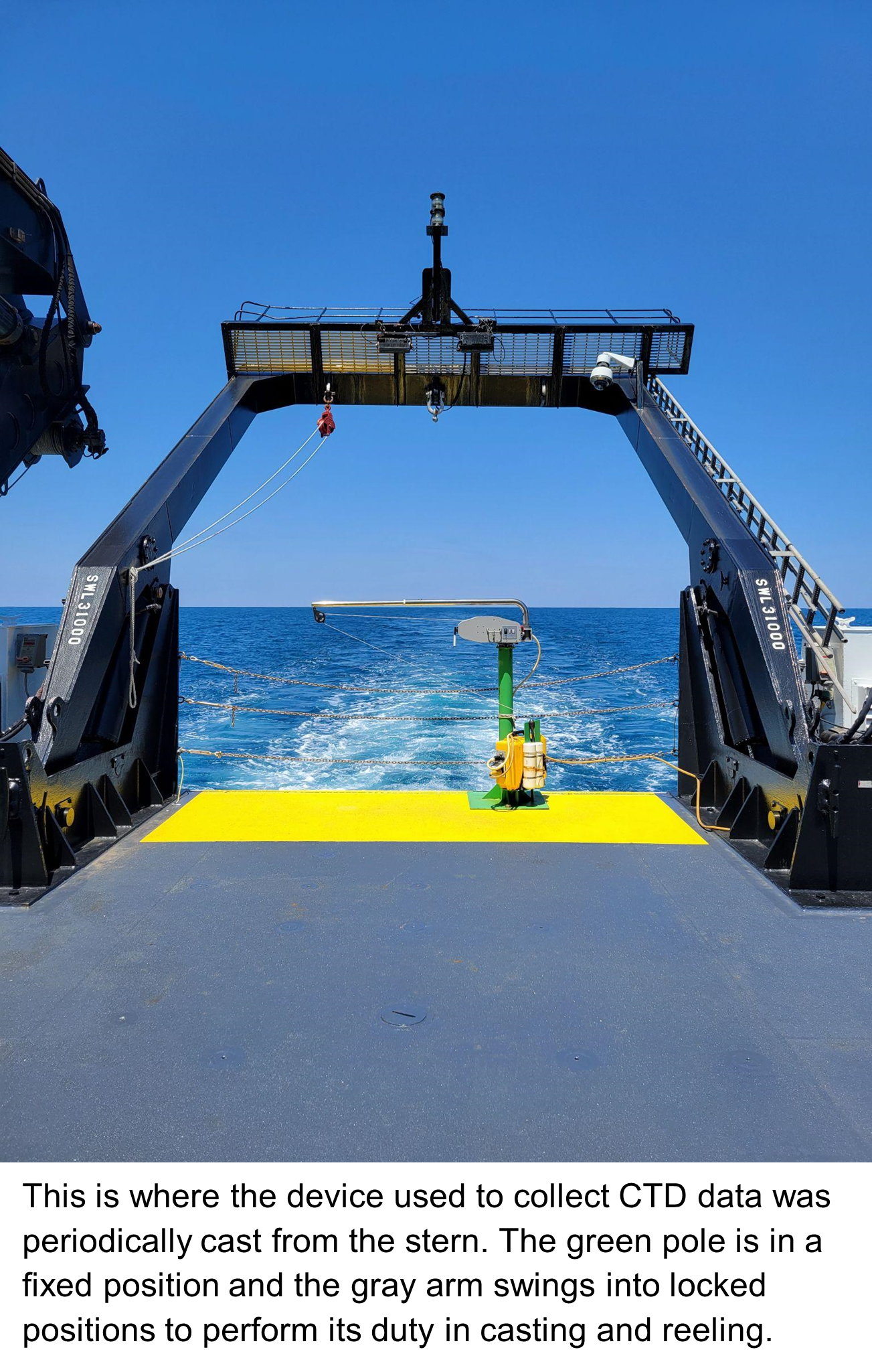
Apart from learning new skills and meeting fellow scientists from across the nation, the other elements of the Nancy Foster were also quite pleasant and impressive! To give you an idea of some of the amenities on board, there is a theater room, a gym, and even a “steel beach” – where I let the gentle waves knocking against the ship rock me to sleep while soaking in the sunshine until it was time to view the beautiful sunsets. And I must say, thank goodness for the gym because the food is bountiful and exquisite – thanks to our outstanding and thoughtful chefs – and I could hardly save room for desserts (Sidenote: if you ever get a chance to sail aboard the Nancy Foster, the salad bar is arguably underrated!).
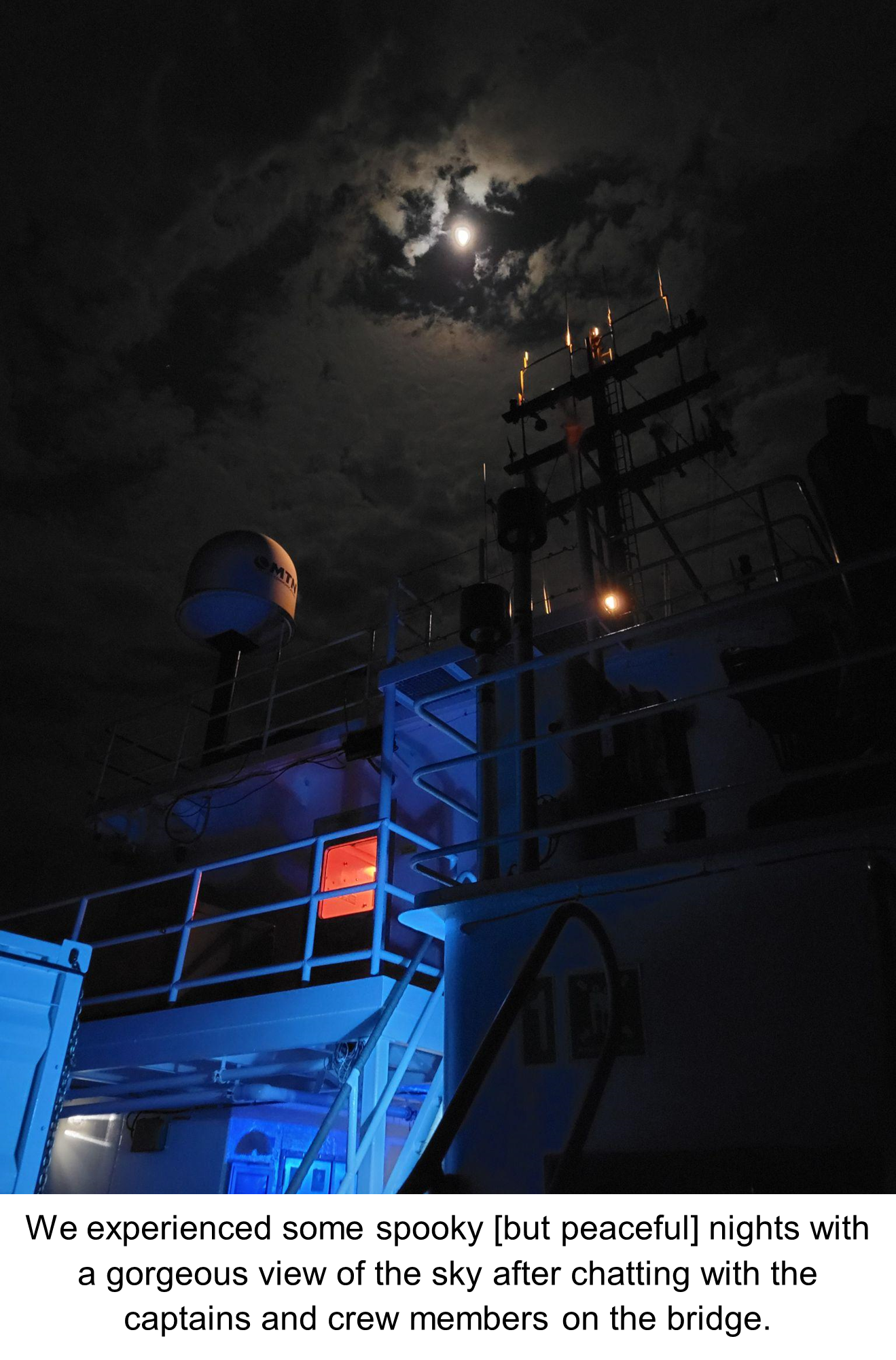
The beautiful sunsets were not the only astonishing sights we were able to see. Before we set sail, we were told there was a good chance of us seeing dolphins playing around the bow of the ship, and we were not disappointed! Dolphins enjoy the frequencies that our multibeam sounders emit, as well as the wake the boat creates, and are impressively able to keep up with our 10-knot (~11.5 mph) speed. Although not exactly a biology-focused cruise, we also came across one of my new favorite animals… the flying fish! I previously thought their common name was an exaggeration until I watched as they launched themselves through the water’s surface and soared across the ocean for what seemed like hundreds of feet (apparently they can travel up to 650 ft across water!). Between these experiences as well as observing the diel vertical migration of plankton via backscatter data in real-time, my marine biology enthusiast side was quite happy.
This opportunity to explore the ocean has added so much value to my studies. When I decided to become a marine scientist, this is exactly the type of experience I had hoped for. Learning the technology and operations of hydrographic surveys, as well as building connections with fellow enthusiastic scientists with diverse training and backgrounds is especially valuable to me. I am confident that this opportunity to network and gain new skills at sea will stay with me well into the future. I feel quite lucky to have found this program and to have made these connections, and I am excited to see what new developments there will be in hydrography in years to come!
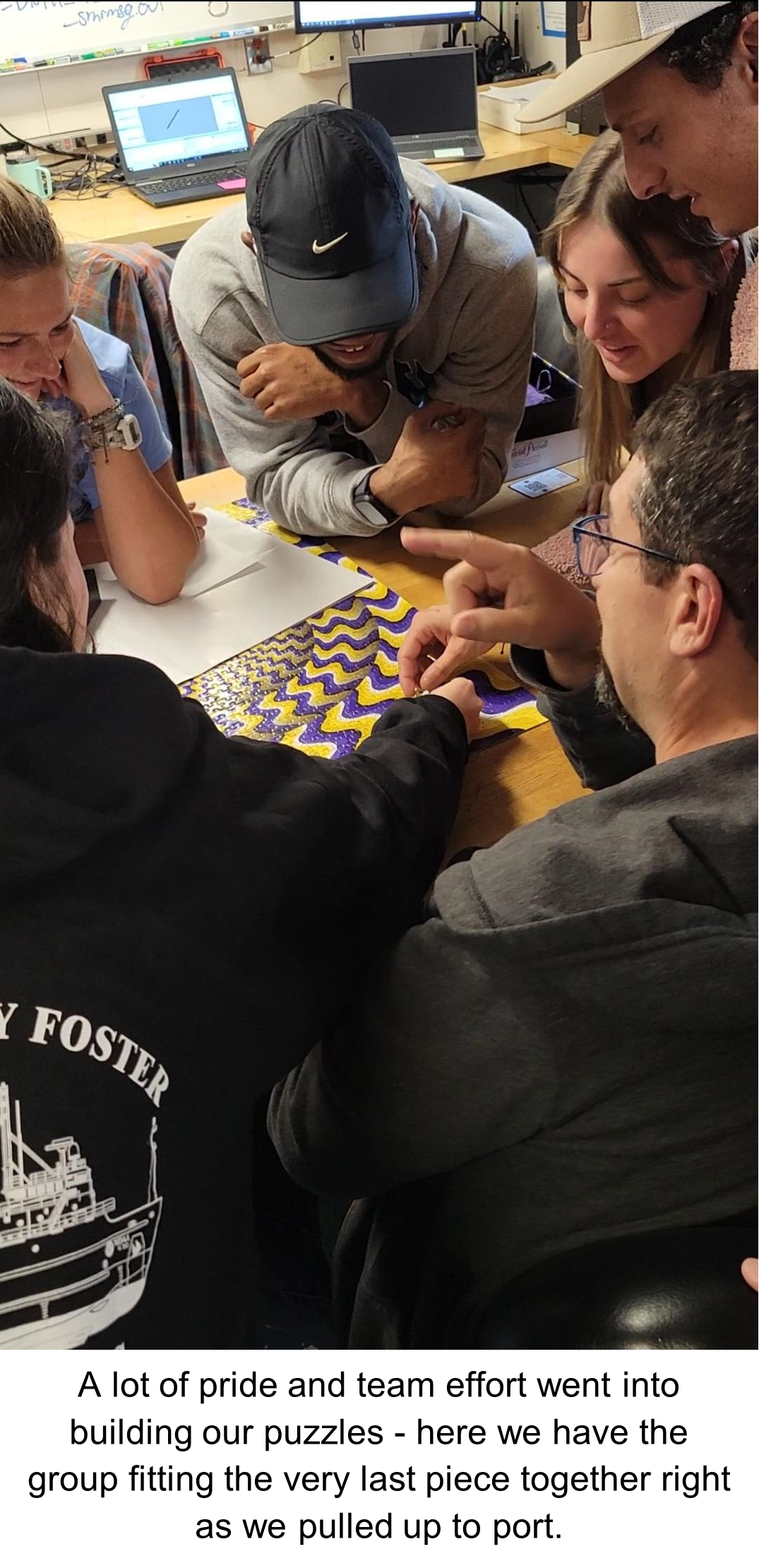
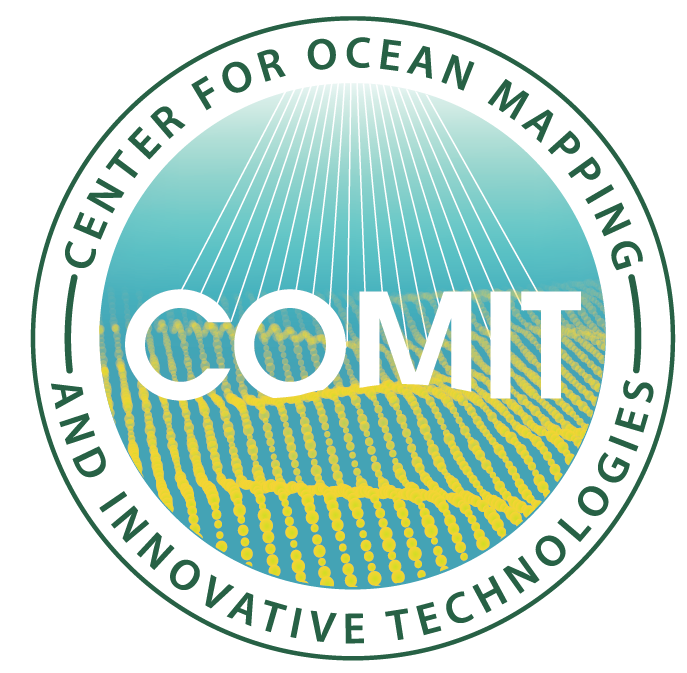
Recent Comments